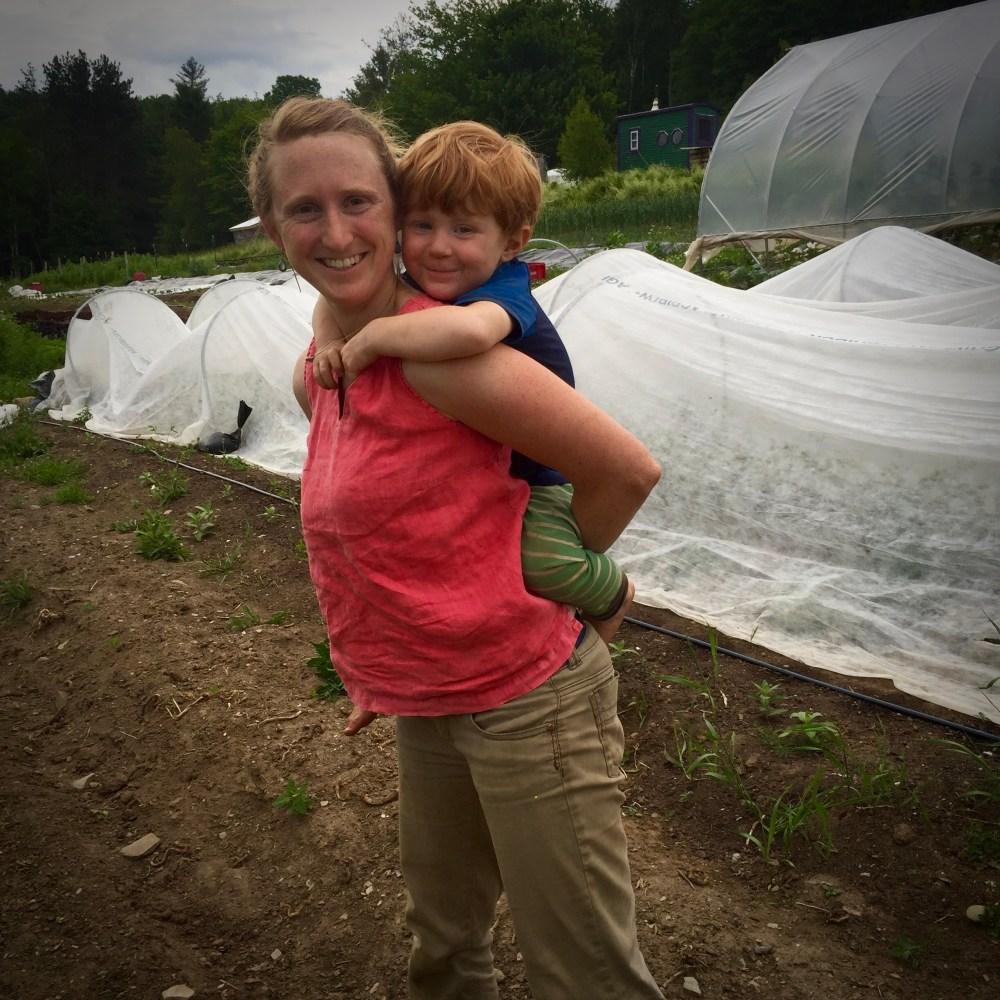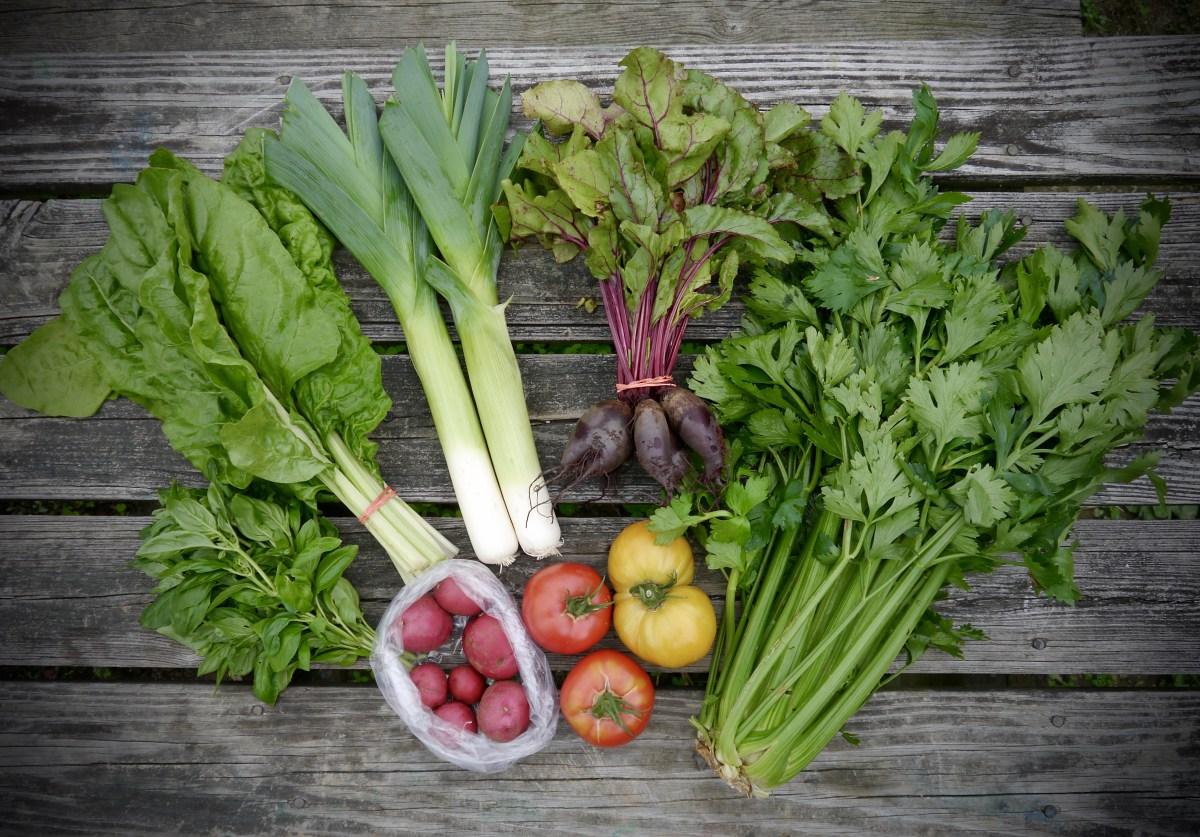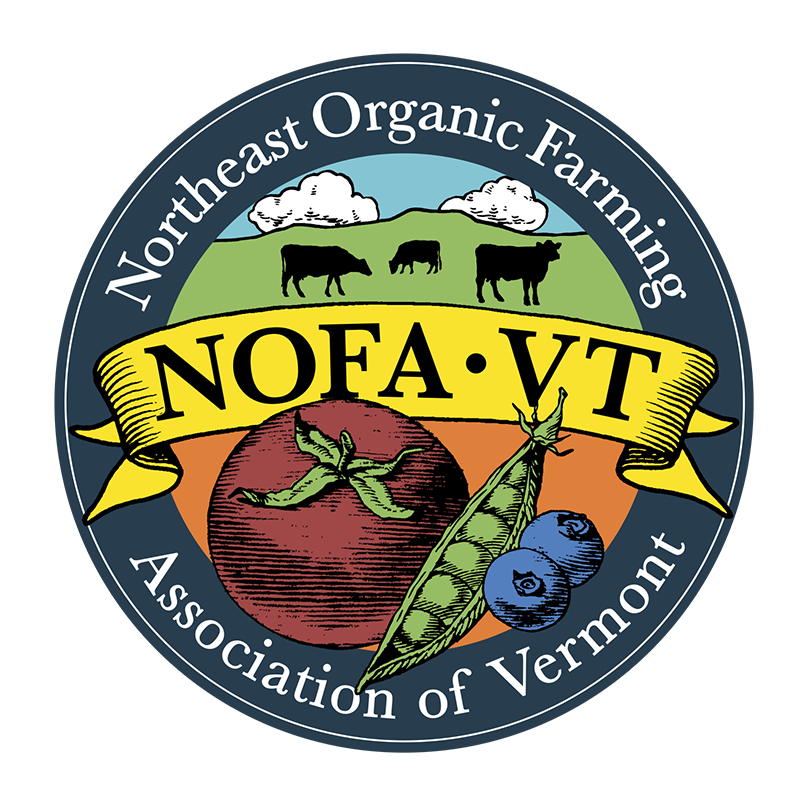
In 2013, my husband and I started Good Heart Farmstead with the mission to make local food more accessible. Not only did we aspire to make it easier for people to find local food, but we wanted to make it easier for them to afford it. We made connections with the local food shelf, and organized to drop off left-over produce after the CSA pick-up each week. While this helped us work toward our mission, when we had the opportunity to sell that excess produce, we always took it, feeling the rub between generosity and solvency. When a local gleaning organization came by to ask about cleaning our fields, we again felt the discomfort. As a farm with a social mission, shouldn’t we immediately answer yes? But what about the value of that “excess” produce as organic matter to turn back into our fields? If we couldn’t sell it, couldn’t we at least recoup the nutrients?
We quickly learned the impossibility of giving too much food away while maintaining a financially viable farm. As any farmer or small business person knows, the early years are fat on expenses and lean on cash. We were willing to go a few seasons without paying ourselves as we established the farm, but the bills couldn’t wait. Still, we had sowed our mission right along with our seeds, and were unwilling to uproot it. So, how to meet financial needs and work to increase local food access at the same time? The answer for us came in the form of the NOFA-VT Farm Share Program.
Established in 1994, the Farm Share Program was created to ensure that farmers receive full price for their produce while offering it at a subsidized rate to limited-income Vermonters at the same time. Through a cost-share system, the Farm Share Program makes CSA shares available at half-price to income-eligible Vermonters, with 25% of the share raised by the farm through community contributions, and the remaining 25% matched by NOFA-VT. At Good Heart Farmstead, the work of fundraising 25% of the share cost fit in with our mission, as it gave us a framework to engage our community around the issue of food access. At Good Heart, that engagement culminates with on-farm fundraising events for the Farm Share Program, giving folks the opportunity to connect with the land, the food, and fellow community members.
Since its inception in 1994, the Farm Share Program has grown from three participating farms to 39, located all across Vermont. In 2016, NOFA-VT helped fund 211 CSA shares, a value of $98,011, serving 645 people in all. Though the program has grown substantially, the need is still greater than funding allows. Income-eligible applicants are accepted on a first-come, first-served basis, but each year, NOFA-VT’s matching funds are exhausted before all shares are paid for. Farms that have raised enough money on their own can choose to cover 50% of the share cost; alternatively, applicants might receive a smaller subsidy and pay up to 75% of the share cost. Still, there are times when there are no funds left on either side to offer a subsidy, and in these cases, the applicants must wait for the next season. Last year, 21 CSA shares were unfunded by NOFA, but still funded by farms, while 22 CSA shares were not approved for the program at all, as the money had run out. If anything, this speaks to both the success of the program in creating a framework that meets Vermonters’ needs, as well as the appetite for program growth.
It’s counter-intuitive, but because of it’s popularity, NOFA-VT has done little outreach for the Farm Share Program. “If we did, we’d expect the number of shares we aren’t able to fund to increase dramatically,” says Erin Buckwalter, the Market Development Director at NOFA-VT. The largest single fundraising event for the Farm Share Program is NOFA-VT’s “Share the Harvest” fundraiser, in which restaurants, coops, and food stores donate a percentage of the day’s sales to the support the program. In 2016, 65 participants raised $17,450, all of which will help subsidize CSA shares come spring. Donations, of course, are welcomed year-round, with many participating farms including a donation option on their CSA sign-up forms.

The strength of the Farm Share Program lies in the fact that it is not prescriptive; farms decide what fundraising methods work best for them and how to engage with their communities. While CSA members typically receive a 50% subsidy, they may receive more depending on need and fund availability. Similarly, donations come in anywhere between $5 and $250 or more. It is a give-what-you-can model, strengthened by community involvement.
“The program is really about connecting and creating sustainable relationships,” says Mike Good, Community Food Security Coordinator at NOFA-VT, which in turn strengthen the local food system. At Good Heart Farmstead, we’ve been fortunate to cultivate long-term CSA members on both sides of the program, those who make annual donations and those who are able to access fresh, local food as a result. In some cases, we’ve funded 75-100% of a share, and in other cases, families who once took advantage of the subsidy returned the following year to pay in full and make a donation to the program.
A sustainable food system depends on the viability of farms and the accessibility of nutritious food for everyone. That we are able to get paid the full price of a share even while offering financial assistance helps make it possible for us to grow a sustainable business. That we can work with our community to increase awareness of food access issues, and raise money in the process, makes it possible to grow our mission. With increased farm participation and community involvement, the Farm Share Program has the opportunity to bring local food to more people who need it.
To learn more about how you can get involved in the Farm Share Program, either as a farmer, eater, or donor, visit nofavt.org/farmshare.

